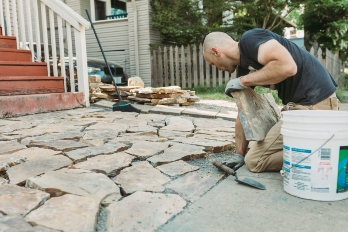When you think about saving energy at home, maybe you consider things like insulation, LED bulbs, and solar panels. All great things.
Simple mindfulness is a big part of the equation too.
With these 10 habits and tweaks, you can save energy, shrink your utility bills and reduce your carbon footprint at the same time. And most of them don’t cost a thing.
1. Work with the sun
Use curtains and blinds to block the sun when it’s hot outside and let it in when it’s cold. This habit can make a huge difference. Curtains and blinds also help prevent heat loss, so close them on cold nights.
2. Clean your air filters
Clean or replace the air filters in your heating and air-conditioning systems on a regular schedule. It’s a quick, easy task that makes a big difference in the efficiency and lifespan of the equipment. How often you need to do it varies. Check the manufacturer’s recommendations and ask your pro.
Reminder: Annual professional maintenance is critical to the efficiency and safety of these systems. So you don’t have to call every year, ask your pro for a permanent spot on their schedule.
3. Turn down your water heater
Water heating is right behind space heating and cooling as a portion of energy use for most households. You save a lot of energy when you use less hot water. So simply lower your water heater to 120 degrees. You might not even notice the difference.
4. Wash clothes in cold water
About 90% of the energy that goes into washing a load of laundry is used to heat the water. For most things, modern machines and detergents do a fine job with cold water. If you need hot water for an especially oily or germy load, you can still rinse with cold.
5. Don’t rinse before loading the dishwasher
Dishwashers are almost always more efficient than washing by hand — especially if you don’t pre-rinse. And you shouldn’t need to. Today’s machines are designed to handle anything that dries on.
If unrinsed dishes aren’t getting clean, try an enzyme-based tab detergent. Rinse aids help too. Also, be sure to follow the manufacturer’s loading tips.
6. Hang-dry your clothes
The dryer often uses more energy than a newer fridge and dishwasher combined, according to the Natural Resources Defense Council. Hanging clothes to dry even part of the time helps. Both outdoor lines and fold-up indoor racks work well.
BTW, dryers are hard on many fabrics, so your clothes might last longer too.
7. Dry smarter
If you need the dryer, give it less work to do. Use the washer’s fastest spin cycle to get the maximum amount of water out of the clothes.
8. Turn off your ice maker
Refrigerators use a ton of energy. They run 24/7, after all. And those with built-in ice makers use 12% to 20% more energy than those that don’t, according to the National Institute of Standards and Technology.
9. Mind your devices
Turn off your computer when you’re not using it. A laptop uses a lot less energy than a desktop, so opt for that when you can. And unplug devices after they’re charged, or the charger will keep drawing energy.
10. Do chores early, late, and on weekends
Many utility companies charge more for electricity used when overall demand is highest. Typically, peak rates (also called time-of-use rates) are in effect weekdays. Off-peak rates might apply only overnight, when most people are asleep. Check your electric bill for your utility’s pricing schedule.
While doing laundry and other chores off-peak won’t save energy, it can save money.




